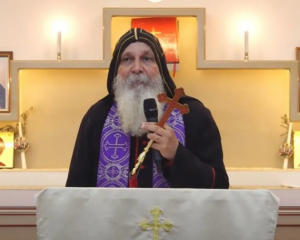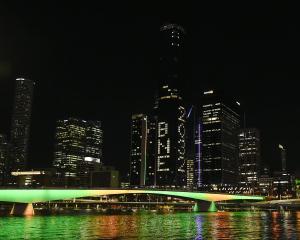It's the great race against time to prevent Australia having its crown jewel - The Great Barrier Reef - put on UNESCO'S World Heritage "danger" list.
The Queensland and federal governments have taken significant steps this year to retain the reef's status - and it will soon become clear whether the country has done enough to protect the natural wonder.
Many consider an "in danger" listing an embarrassment given Australia's relative national wealth.
Other sites on the list include the Tombs of Buganda Kings at Kasubi, Uganda, the Simien National Park in Ethiopia and Timbuktu in Mali.
However, the Everglades National Park in the US and the Maritime Mercantile City of Liverpool in the UK also feature.
The World Heritage Committee decides in June whether to add the reef to its "in danger" list.
The fight to stop the potential downgrading of the reef's health status by UNESCO is going right down to the wire.
It was only on Thursday that the Queensland and federal governments announced major initiatives to boost protection of the reef.
The state government revealed the make-up of a new 23-strong Great Barrier Reef Water Science Taskforce, part of a long-term reef management plan announced in March, to tackle one of its biggest threats: the quality of water running into the reef and its catchments.
The federal government announced the rollout of a second phase of Reef Trust projects worth $15 million, with almost half to be spent on controlling the outbreak of coral eating crown-of-thorns starfish.
It's not the first time Australia has faced the prospect of the reef being given an endangered listing.
Four years ago, the first whispers of the reef being put on the list of shame came as UNESCO's World Heritage Committee got wind of a plan to build gas plants on the doorstep of the reef.
The Queensland government announced it was in favour of the Curtis Island project, which green groups claimed put the reef at risk.
Soon after UNESCO sent a team to Australia to investigate.
Their findings included broader concerns about the health of the reef, the number of developments along the Queensland coast and the lack of a long-term protection plan.
The following year, in 2012, the committee issued its first warning to Australia: do more to protect one of the great wonders of the world or risk having it listed as a site in danger.
A decision over an "in danger" listing has since twice been delayed by the committee.
But it's now only three weeks before the World Heritage Committee makes a draft decision on the reef's status, on May 29.
Since 2012, the Commonwealth and Queensland governments have been working to tick off recommendations made by UNESCO.
The federal government commissioned a major assessment of reef management practices which has influenced the Reef 2050 Long-Term Sustainability Plan.
It's hoped this plan - which includes the new taskforce - and other efforts, such as increased funding towards the health of the reef, will be enough for the reef to retain its status.
In its last report, the World Heritage Committee commended efforts to improve water quality and an intention to restrict future port development.
But it also raised concerns about a plan to dump millions of tonnes of dredged spoil in the Great Barrier Reef Marine Park as part of a project to expand Abbot Point coal port.
That decision has since been reversed and the spoil will be dumped onshore.
In a sign Queensland authorities are concerned, the new Labor government sought urgent amendments to the Reef 2050 plan, within weeks of forming a minority government.
The government successfully fought for the implementation of a ban on sea dumping of dredge spill within the reef World Heritage area and the creation of the taskforce, which will determine how to achieve an 80 per cent cut in nitrogen run-off, and a 50 per cent cut in sediment run-off onto the reef by 2025.
WWF and the Australian Marine Conservation Society told UNESCO early this year that Australia wasn't doing enough to protect the reef.
They want the Commonwealth to commit an extra $500 million over five years to stop pollution harming the reef and ban all industrial scale dumping of dredge spoil in the World Heritage area.
They also want extra resources and powers given to the Great Barrier Reef Marine Park Authority.
However, Federal Environment Minister Greg Hunt has said UNESCO's decision to delay the endangered listing was a sign they recognised the significant work Australia had done to protect the reef.
He also pointed out the state and federal governments are pumping $200 million each year into reef projects.
But whether all this is enough to avoid an in danger listing is ultimately up to the World Heritage Committee.












